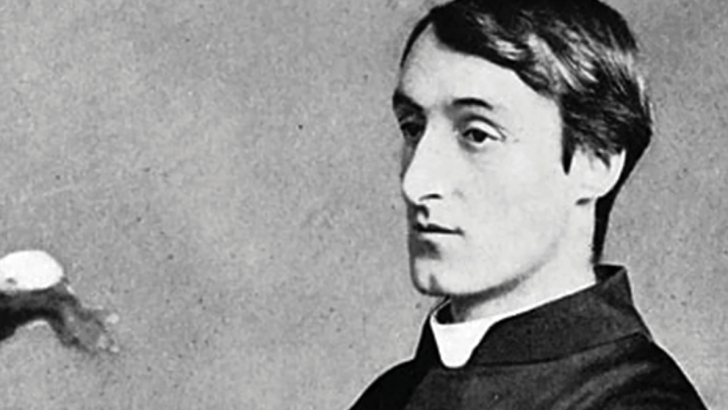Bright Wings, Dappled Things: Poems of Gerard Manley Hopkins SJ
with photographs of Fr Francis Browne SJ, commentary by Jo O’Donovan RSM (Messenger Publications, €17.95)
Desmond Egan
This brightly produced book is aimed not at specialists but at ‘beginning readers’ and within such a modest aim, it is excellent. It offers a fine selection of Hopkins’s poems accompanied by helpful commentary, with date and place of composition, background, and a guide for some difficult words or syntax.
The Browne photographs, taken later, are not presented as illustrations of the poems – though sometimes they do strike a chord there, as in the shots of Emo, Oxford, and Stonyhurst as each place might have been in Hopkins’s time.
An interesting effort, even if not always successful (seagulls beside the Windhover poems; a young girl beside the Margaret one) – and they do add to the attractiveness of the large-size presentation. A surprisingly inexpensive hardback publication.
Editor
I do not know the editor, Sr Jo O’Donovan, but the book carries a flavour of a personality that is modest, lively, enthusiastic, and a careful researcher. Among other things, I have learned from her notes that Great Tom was the name of the bell in Christchurch, Oxford – adding another witty nuance to Hopkins’s reference in ‘As Kingfishers’; that a ‘randal’ is a leather shield; that Duns Scotus’s teaching on the Immaculate Conception has proved seminal in modern theology…these facts are reflective of years of enthusiastic research on the part of the commentator.
Sr Jo, I understand , is a retired teacher of Theology and a Sister of Mercy. On occasion, her enthusiasm can lead her to assume that her readers share her own religious sense. Although this reader often does, others might find her commentary a little preachy at times (“a sacramental poet”; poem as “a tutorial” on the truth etc.).
That said, one often has had to put up with commentaries by non-believers reluctant to accept how central to Hopkins’s poetry is his Christian vision. Simonides’ Greek fatalism, Du Fu’s Buddhism, Milton’s Puritan philosophy… are generally respected in a way that Hopkins’s faith sometimes is not.
Even his dying words, “I am so happy”, have been dismissed without proof.
The editor helpfully divides her edition into four sections.
Firstly, the St Beuno’s poems; then those written immediately after, when Hopkins was passed around like a journeyman Jesuit (he was liked but never really appreciated as a writer of genius, worthy to be named in the same breath as Shakespeare). Thirdly come the Dublin years (I am uneasy with her assumption that he was ‘prone to bi-polar disorder’ here). The fourth section, devoted to ‘The Wreck’, is a formidable undertaking, carried out with panache – even if the text of the poem is inexplicably and annoyingly marred by breaks introduced in stanzas 16, 19, 21 and 29.
Such errors, along with variations regarding the possessive case (Hopkins’s), and a typo here and there will surely be corrected in the next edition.
This book will be found valuable as a more-than-introduction to Hopkins. Since it seems that he is still not fully appreciated by his Order, Bright Wings should be in every Jesuit reading room as well as in the collection of anyone who loves great, life-changing poetry.
Desmond Egan’s latest book is Hopeful Hopkins.


 Gerald Manley Hopkins
Gerald Manley Hopkins 